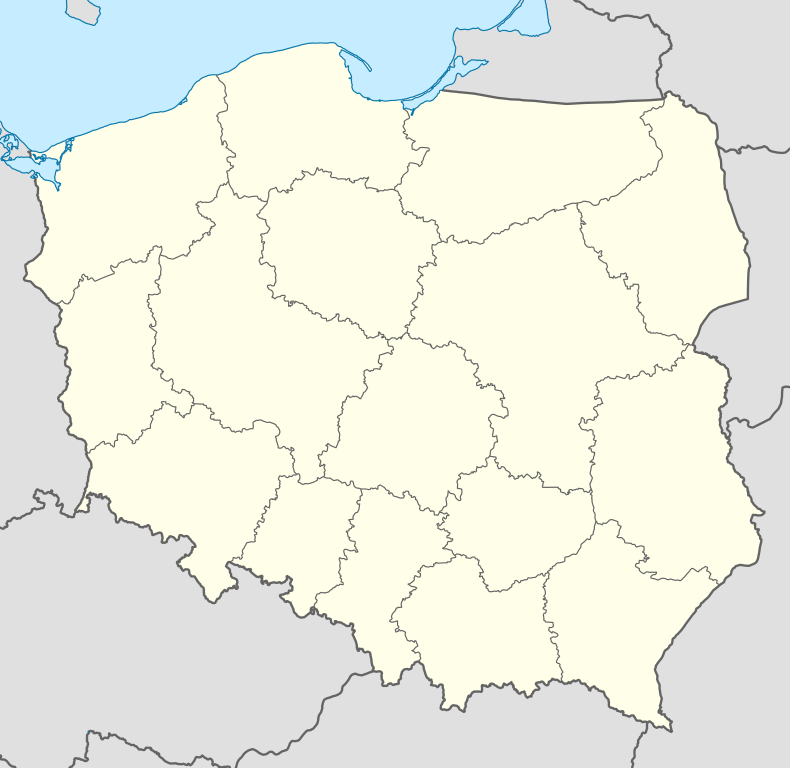Solina, Poland
| Solina | |
|---|---|
| Village | |
|
Solina Village nowadays | |
 Solina | |
| Coordinates: 49°23′N 22°28′E / 49.383°N 22.467°E | |
| Country |
|
| Voivodeship | Subcarpathian |
| County | Lesko |
| Gmina | Solina |
| Elevation | 482 m (1,581 ft) |
| Population | 190 |
| Website | http://www.solina.pl |
Solina [sɔˈlʲina] (Ukrainian: Солина, Solyna) is a village in Lesko County, Subcarpathian Voivodeship, in south-eastern Poland. It is the former seat of the gmina (administrative district) called Gmina Solina (in 1999 Polańczyk became the new seat). It lies approximately 15 kilometres (9 mi) south-east of Lesko and 80 km (50 mi) south-east of the regional capital Rzeszów.[1] In 2002 the village had a population of 190.
It is best known for tallest water dam in Poland called Solina Dam that creates biggest artificial lake in poland called Lake Solina. It's name comes from the word solanka, meaning "brine".
History
Original Solina village was located up the San river but due to Solina lake creation it lies now under water. Today Solina was created along with water dam on grounds of small village Zabrodzie. Original Solina village was one of the oldest villages in Bieszczady mountains. It was first mentioned on 1436 as a village owned by family of Kmits from Sobien. At the end of XV century it was located again on Wallachian law. There was three main ethnic groups living in the village until World war 2: Boyko (Ukrainians), Jews and Poles. On Holocaust most Jews were taken away to concentration camps by Nazism Germans occupying Poland. Another ethnic group of Boyko were forced by communist government to move to Soviet Union or west of Poland. About 500 polish people left were later moved in 1960 to village of Berezka because of building of Solina Dam.
References
| ||||||||||||
